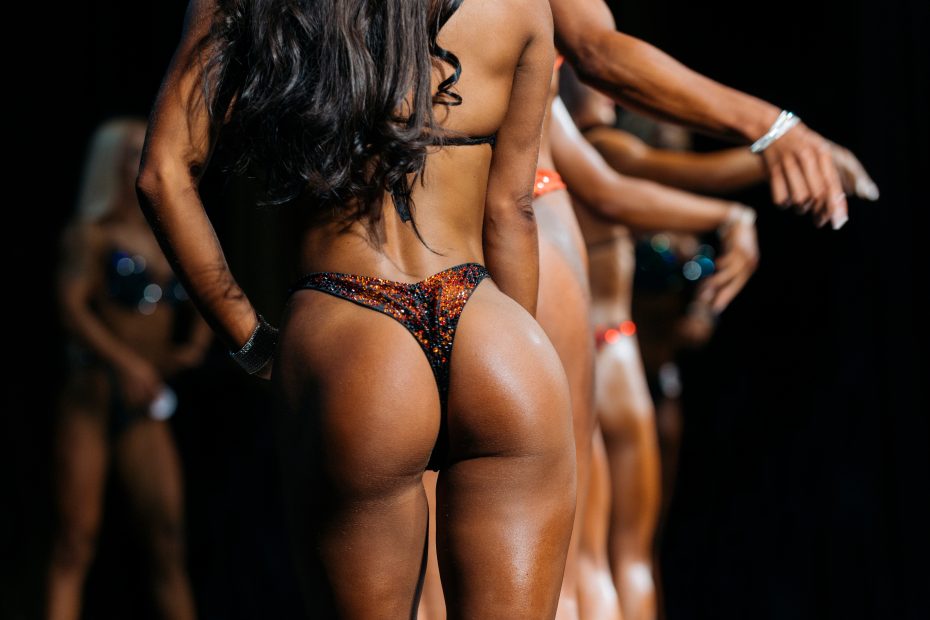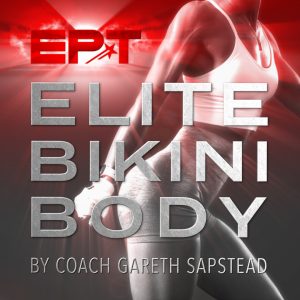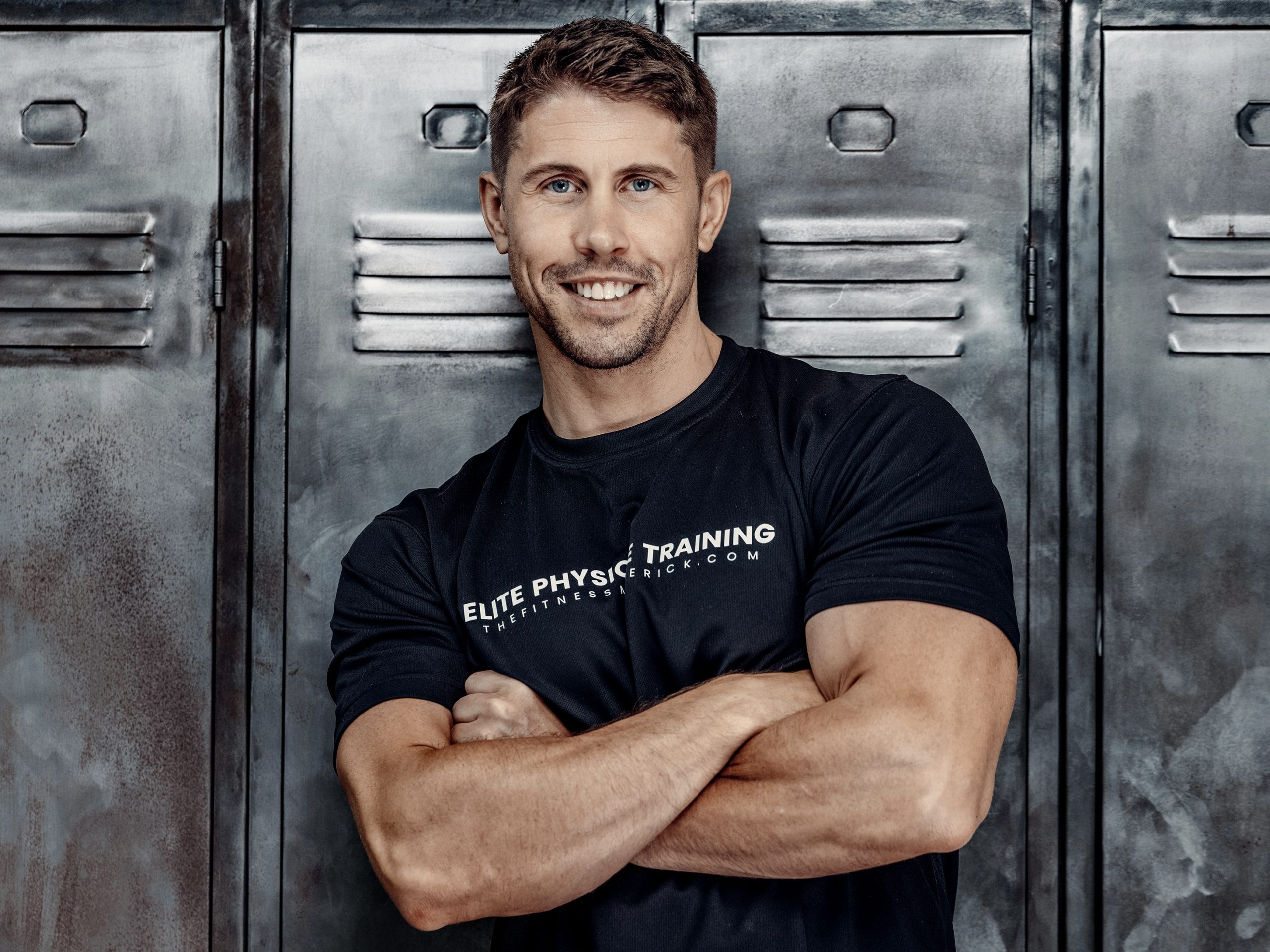When it comes to achieving the perfect physique for competition, one of the key focus is always the glute muscles. Well-defined, rounded glutes not only enhance overall aesthetics but are also crucial for scoring highly with judges. Here are some quick-fire tips to help you build more rounded glutes:
Prioritize Glute Activation
Before engaging in heavy lifts, it’s essential to “activate” the glutes. These exercises aren’t magical and won’t suddenly increase your ability to work your glutes harder, but instead are a means to provide you with some more awareness of the areas you’re trying to target. Essentially, so-called activation exercises will help you “find” the muscle so that you can better build it. If you don’t have this problem then you won’t benefit, and just some warm up sets will suffice. Otherwise, you’ll want to incorporate exercises like clamshells, glute bridges, and band walks into your warm-up routine. This pre-activation will ensure the glutes are fully engaged during your workouts, leading to more effective muscle recruitment.
Focus on Compound Movements
Compound exercises such as squats, deadlifts, and hip thrusts are vital for maximizing glute development. These movements engage multiple muscle groups and allow for heavy loading, which is crucial for hypertrophy. Make sure to incorporate variations, such as sumo squats and Romanian deadlifts, to target different areas of the glutes. But, always remember that your own anatomy and body structure will differ from others, so there will be certain types of squats and deadlifts, for example, that will work better for you than others will. You’ll also need to factor in that you might not want to be overworking certain areas of your legs which lead to losing your symmetry.
Related video
Incorporate Unilateral Training
Using unilateral movements helps to address imbalances between the left and right glutes. Exercises like single-leg deadlifts, Bulgarian split squats, and single-leg hip thrusts can improve overall symmetry and strength. This is crucial for competitors who need to present a balanced physique on stage. These exercises also become more important as we age and reach into those masters categories, where building body resilience and training for longevity factor in more. To learn more about exercise selection and programming for optimal glutes development, then check out the Ultimate Bikini Glutes & Hamstrings Training Plan & Guide.
Experiment with Tempo Training
Varying the tempo of your lifts can significantly influence muscle growth. For example, using a 3-1-1 tempo (three seconds down, one-second pause at the bottom, and one-second up) during exercises helps to increase time under tension. This method can stimulate more muscle fibers, emphasize the stretched position a little more in an exercise, and enhance glute development. For a good scientific review of training tempo then see here:
Mind-Muscle Connection
Enhancing the mind-muscle connection is essential for targeting the glutes effectively. If your sport involved lifting as heavy weight as you can, then you’ll adopt a technique to give yourself the best mechanical advantage, and your body will just adapt to be able to lift heavy weights. However, for the physique athlete then resistance training should be thought of as a tool to build and shape your muscles. Oftentimes, lifting a little lighter but with an overall better connection to the muscles that you’re tying to stimulate will get better results.
Employ Progressive Overload
To continually build muscle, implementing a progressive overload strategy is crucial. Gradually increase the weights, volume, and intensity of your workouts. If your glutes are lagging then a high-frequency specialization phase can really help. This is where for a training block you might train your glutes 3-4 times per week, using a variety of loading schemes and exercises that target the differing functions of your glutes. Selecting the right exercises for this strategy will allow you to train your glutes frequently, while instead of overtraining, your glutes have the potential to get very strong, very fast. Overall, your gym performances rarely lie, and if you’re attempting to train your glutes frequently in an attempt to grow them, and not seeing your lifting numbers improve then something needs to change. Get the balance of exercises and volume right and you’ll experience breakthrough glutes growth.
Glute-hamstring tie-in versus the booty “shelf”
We know from research that certain exercise “types” do a better job at targeting the upper or lower fibers of your glutes. I like to think of these as “stretcher” versus “squeezer” exercises. Stretcher exercises are those where your glutes are worked hardest when they are stretched (think, RDL’s, squats, leg presses, split squats), while squeezer exercises are ones that emphasize the peak contraction, and you tend to feel most in your glutes as you squeeze at the top (think, hip thrusts, glute bridges, back extensions, glute kickbacks). The interesting thing is that while stretch-focused exercises will target a little more of the lower region of your glutes, squeeze focused will target a little more of the upper fibers. For complete beginners then this really doesn’t matter, but if you’re a competitor looking to refine your glutes development then understanding simple concepts like this will better help you identify the exercises that will get you there. Obviously, you’ll also want to be incorporating other glutes exercises that utilize hip abduction and external rotation, too, for more complete development.
Keep Cardio Balanced
There’s nothing more frustrating starting a dieting phase with more rounded glutes, only for them to disappear at the end of your dieting phase. Cardio type, duration and intensity is a big factor here. While cardio plays a role in fat loss, too much can hinder muscle growth. Incorporate a balanced approach by limiting high-intensity and high-impact cardio sessions, and instead focusing mostly on low and medium intensity cardio, using low impact activities such as brisk incline walking or cycling. A stair climber ‘can’ also be a great option for those struggling to get their heart rate up to the desired level, but recovery factor also needs to be considered. These forms of cardio are generally easiest to recover from, can repeat more frequently, and help to preserve more muscle mass when in a contest prep phase. This will help maintain a fuller appearance in the glutes while still cutting down fat.
Conclusion
Building rounded glutes for competition requires a comprehensive approach that combines exercise, nutrition, and recovery. By applying these tips you can enhance your training and achieve the more rounded glutes that will be essential to your success on stage. Remember, consistency and dedication to both your workouts and nutrition are key to reaching your goals and showcasing the best version of yourself.
Get 7 days FREE training and $200 worth of free gifts today with the new ELITE BIKINI BODY program. Learn more HERE


